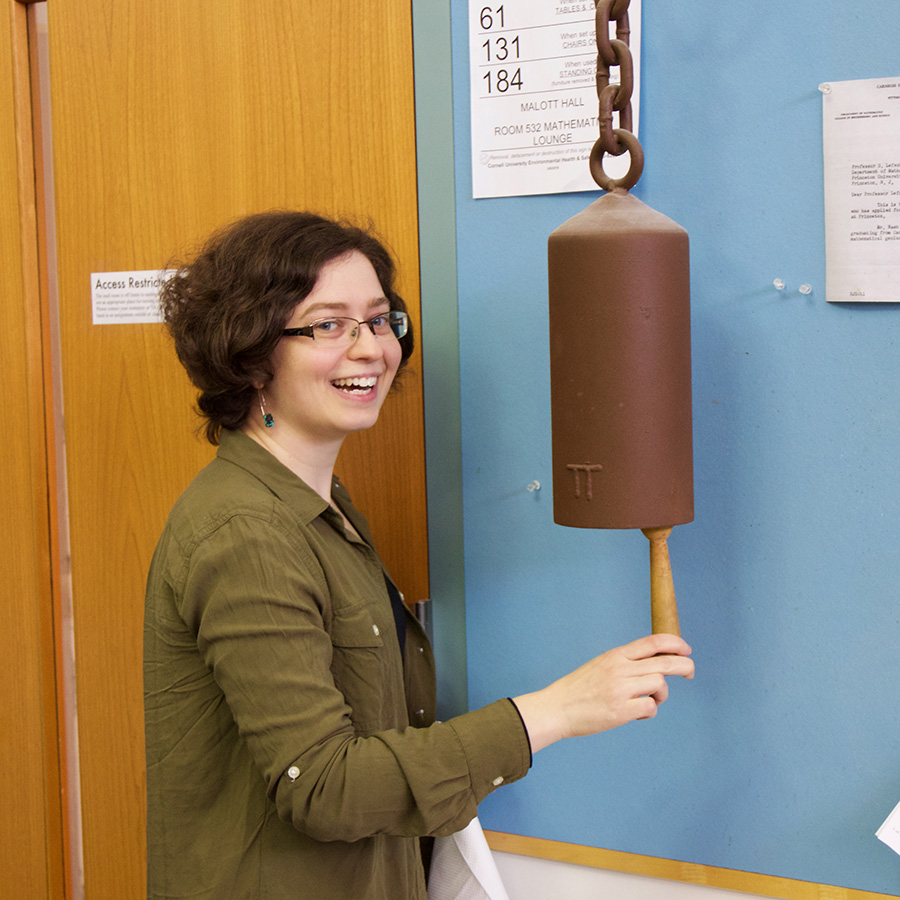Vying for Pi – and pie – on Pi Day
By Joe Wilensky


A Pi Day celebration was held beginning at 1:59 p.m. Monday, March 14, in Malott Hall, hosted by the Cornell student chapter of the Association for Women in Mathematics.
The event, which filled the fifth-floor lounge, featured pie, of course (from Wegmans: “Stop by for a scrumptious sector of a circle – a slice of pie, that is,” the invitation offered) and Pi-related activities and games.
Pi Day is observed annually on March 14, often exactly at 1:59 p.m., to mark the first few digits of the mathematical constant 3.14159…, the ratio of a circle’s circumference to its diameter.
Activities included a paper plate-tossing game that demonstrated a method known as Buffon’s Needle that uses trigonometry and geometric probability to approximate the value of Pi; other visual games and estimation challenges also illustrated the value of Pi and its mathematical uses.
Voula Collins, a graduate student in the field of mathematics, held out a typical can of three tennis balls and asked what value is greater – the height of the can or the circumference of one tennis ball?
“The way to think about it involves using Pi,” she said, noting that the height of the can is three times the diameter of one tennis ball. But the circumference is Pi times one diameter. Since Pi is bigger than 3, then it is the circumference that is larger than the height, despite what might be a visual illusion that seems to suggest the opposite.
Richard Rand, a professor in the mathematics department, gave a short presentation about the ancient Egyptian value of Pi. The Egyptians fairly closely approximated the value of Pi, good enough for practical purposes – but, at 3.16, the mathematical error was still significant.
Rand showed that their value for Pi was based on approximating a circle by a purposely asymmetrical octagon.
“It's surprising that they didn't have a better approximation for Pi, considering that they built the pyramids, which have lasted for such a long time,” he said.
Maybe that was because the pyramids don’t contain any circles, he mused.
Past Pi Day celebrations in the department have included pie-eating contests.
Media Contact
Get Cornell news delivered right to your inbox.
Subscribe